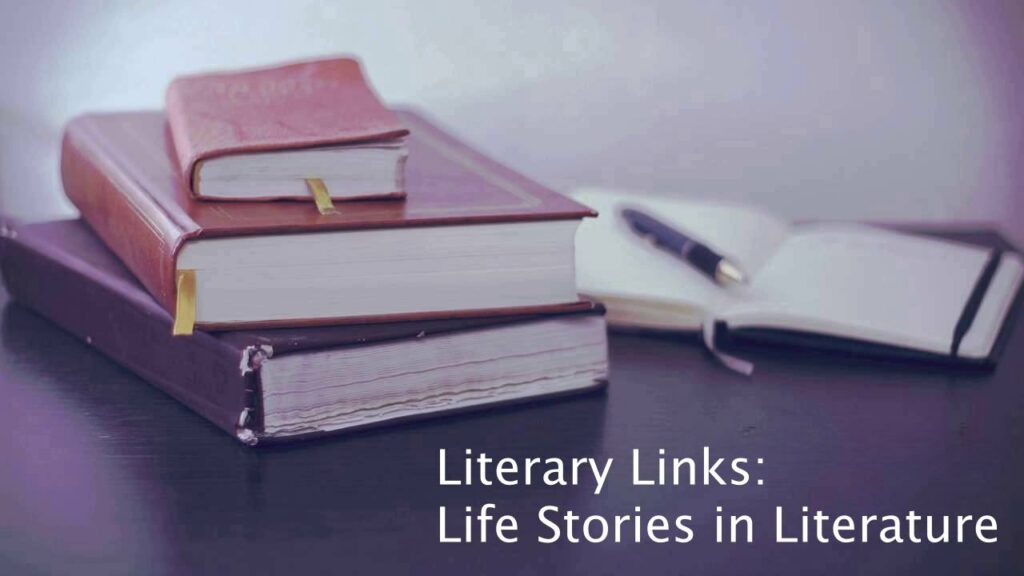Life Stories in Literature
Themes
identity
family
we are what we remember
inside vs. outside stories
imposters
hidden identities & secrets
trauma
creating/controlling one’s own narrative
cultural appropriation
alternate life options
alternative selves
turning points/life decisions
when/how lives intersect
multiple points of view
rewriting history
change your story, change your life
The Forgotten Women Who Shaped the Roman Empire
Kudos to Atlas Obscura for their series She Was There, in which female scholars participate in “writing long-forgotten women back into history.” I find the movement to give voice to marginalized people who have been erased from history one of the most interesting and vital elements within Life Stories in Literature.
And because I did my B.A. and M.A. in Latin, I was especially happy to see this piece about A Rome of One’s Own: The Forgotten Women of the Roman Empire by Emma Southon. Southon explains the problem of working with subjects from antiquity:
When you’re writing about any women in the ancient world, you’re always limited to one or maybe, if you’re lucky, two sources. With someone like Julia Balbilla, everything we know about her is from what she inscribed on the leg of a statue. Then you get creative and extrapolate out from that. The important thing is to make it as clear as possible when you are extrapolating and when you are actually working with source material.
Want to understand American views on Israel? Take a look at this 1958 novel.
“Leon Uris’s bestselling epic Exodus — and its hit movie adaptation starring Paul Newman — influenced generations of Americans, from the suburbs to the State Department.”
Cultural critic Marjorie Ingall discusses rereading the novel Exodus and watching the movie version to try to figure out how to talk to her children about the current war between Israel and Palestine.
I’d argue that it’s worthwhile for everyone to revisit books and movies they loved as kids. You too may be shocked to learn how you missed or even internalized some pretty problematic ideas. Real life is knotty and multistranded, and reductive storytelling harms us all.
Read-alikes: Intergenerational and Multiple-Perspective Tales of Immigration and Other Upheavals
Like Rachel Khong’s Real Americans, a novel in three parts voiced by members of three generations in one Chinese American family, these novels and story collections grapple with immigration, estrangement, love, and misunderstanding from multiple perspectives.
From Booklist.
Day into Noir
The term noir was coined in 1946 by French critics reviewing a group of American thrillers, including Billy Wilder’s Double Indemnity and Otto Preminger’s Laura, both from 1944, to mark a phenomenon they thought new to American cinema, a “harsh,” “true to life” quality, a mood of “pessimism and despair.” Noir was the last product of the studio system, itself now fighting for survival, and unlike the genres that preceded it, it worked best as a showcase for situations and problems that were palpably unsolvable and systemic, endemic to the social, economic, and even cosmic order.
The Best Sci-Fi Mysteries
“When the rules for technology, geography and even personal identity can be changed, murder mysteries get complicated – and fascinating. Mary Robinette Kowal, award-winning novelist and author of the Hugo-nominated mystery The Spare Man, talks to us about her top five sci-fi mystery books – and takes us on a tour of the whodunnits, howdunnits, and whydunnits available to us in science fictional worlds.”
Personhood and Performance in Alexis Soloski’s ‘Here in the Dark’
“Alexis Soloski’s Here in the Dark illuminates the act of performance (no matter the stage) and the notion of stepping into and out of one’s personhood.”
Alexis Soloski is the former theater critic for The Village Voice and a current culture writer for The New York Times. Soloski’s debut novel, Here in the Dark, was published by Flatiron in December 2023. The novel’s protagonist, Vivian, is a theater critic who comes to feel that she is a real person only when she sits in a darkened theater and is able to penetrate the consciousness of the actors on stage.
In this short review, R.P. Finch calls the novel “a rare debut”: “Soloski creates an intriguing tale of art and life with depth, texture, and psychologically three-dimensional characters. At the same time, the novel dives deeper to illuminate the act of performance (both onstage and in real life) and the notions of stepping into and out of character, personhood, and personal identity.”
The geometry of other people
“Some friends are ‘close’. Others are ‘distant’. But our spatial descriptions of social life are more than just metaphors”
David Borkenhagenis, a fellow at the Mathison Centre for Mental Health Research & Education at the University of Calgary in Canada, writes, “Without much thought, we employ a whole library of spatial and architectural metaphors to explain our social worlds – and not just for our personal relationships. These metaphors are foundational for social thought at the societal level, too.”
This realization leads him to wonder: “if we make sense of our friendships, acquaintances, colleagues, families and societies through spatial relationships, could architectural concepts – the intentional design of space – become tools for creating new metaphors for social and political thought?”
The Hidden Worlds of Monopoly
“From Atlantic City to high fashion to Karl Marx, the most recognizable board game has had serious cultural impact.”
I had read that the game of Monopoly was created to teach people about the creation and maintenance of wealth through property, but I did not know that its roots go even further back, to The Landlord’s Game, created in 1904 to teach people about how landlords mistreat tenants. In fact, Adrienne Raphel offers quite a lot of information in this article that illustrates how societal norms can permeate popular culture and transmit them, maintaining the status quo, from generation to generation.
© 2024 by Mary Daniels Brown

